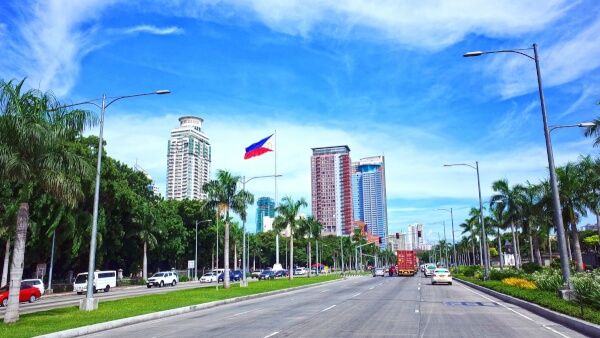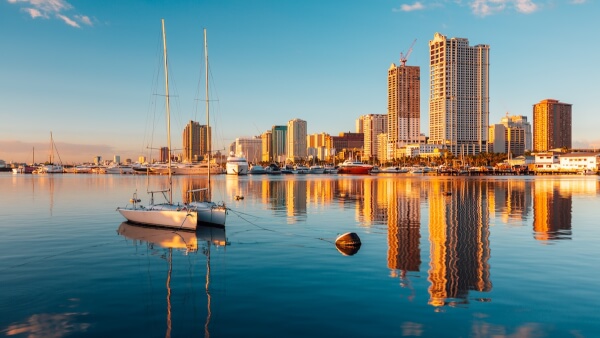Selling property in the Philippines: Taxes for Americans
What taxes do you need to pay when selling property in Philippines? Have a look at our guide to learn all about types, deadlines, and special considerations.

With 17,500km of coastline and over 7,000 islands, the Philippines is a popular destination for those considering a relocation. Before you take the leap, you should consider all the facts, including the country’s healthcare. The healthcare standards in the Philippines are considered to be good, especially due to reforms undergone in the public health sector over the last 25 years, and the popular private fee-for-service system. This article will review the facts about the Filipino healthcare system, and give you options on public and private plans to help you with your visit or relocation to the Philippines.
Money in the Philippines is denominated in Philippine Peso, which can be written as PHP or simply ₱.
It’s always hard to estimate exactly what your home currency is worth as currency exchange rates constantly fluctuate. The good news is that for up to date figures, you can use an online currency converter to check what your money’s currently worth.
At the time of writing, these are the very approximate figures you can expect to find:
All citizens are entitled to free healthcare under the Philippine Health Insurance Corporation (PhilHealth)
To give you a general idea of the Filipino medical bills you’ll run into, here are some costs for healthcare items in the Philippines:
| Healthcare Item | Average Cost in the Philippines |
|---|---|
| PhilHealth insurance plan | ₱2,400 - ₱3,600 |
| One-night hospital stay | ₱2,500 |
| Emergency room visit | ₱2,500 |
| Doctor’s office visit | ₱500 |
To help manage overseas costs if you’re an expat stuck with unexpected medical bills, consider signing up for a Wise Borderless account. You can hold your money in nearly 30 different currencies and pay out to the Philippines in pesos when you need it the most. All fees are fair and clearly explained, and your money will be converted into PHP at the real exchange rate - the same one you find on Google. And because Wise sends money only from local bank accounts in each country it supports, those normal international SWIFT fees you get charged with international bank transfers are cut out completely.
The Philippines has a public medical system with the option to either choose free, government-provided healthcare or purchase private healthcare from your own pocket.
The public healthcare system is delivered through public health and primary healthcare centres linked to peripheral barangay (local town) health centres. Around 40% of the hospitals in the Philippines are public. Doctors at public hospitals in the Philippines are well-trained, but there are still a number that say the technology and equipment used at public hospitals isn’t as good as private ones. So you’ll have to make sure to ask around from your local contacts to get their opinion before you choose the hospital that’s right for you.
The private health sector caters to 30% of the population and is based on North American medical models. If private is the route you’ll take, you’ll be glad to find out that it’s not only widely available in major cities, but actually a majority of hospitals in the Philippines are privately run. Medical services in private hospitals are frequently touted to be held to a higher standard, but that also means it comes at a higher price. Expats may find private health insurance plans are more affordable than those from their home country. The high-quality, low-cost private healthcare system has put the Philippines on the map not only for medical tourism, but even permanent relocation. But even if you’ll just be visiting there for a short while, you’ll need to know that providers expect cash upfront before you can be treated.
To sign up for healthcare in the Philippines, follow these steps:
In case of an emergency in the Philippines you can dial 911, like many Americans are already used to doing. Emergency ICU (Intensive Care Unit) care is usually comparable to what you’d find at other high quality international providers. If you’re out in the countryside when complex trauma or a major medical emergency strikes, you could require evacuation to a better-equipped hospital in the Philippines. And be prepared for this part to get a bit pricey. The cost for an ambulance or emergency air evacuation could be up to ₱50,000.
Once you have your insurance plan set up, you can use theDepartment of Health’s list of hospitals to help you find the best one for you. Those with private insurance may prefer a private hospital, which many consider to have a faster service and better conditions. However, these conditions may be expensive and you won’t be allowed to leave until you’ve paid the full bill. The average price for an overnight hospital stay is around ₱2,500.
Local medical staff are well trained, especially in big cities. Many doctors have studied in top universities and practiced medicine overseas, and speak English.
You can register for a doctor locally. Visit the Department of Health’s website or use this list of authorised medical facilities to help you. You can also talk to your insurance provider, local friends or other expats for recommendations. You don’t need to make an appointment with a doctor there first. Instead, simply show up during their scheduled clinic hours where you’ll normally be seen within an hour. You may have a longer wait time at public clinics and hospitals compared to private facilities, but if you call to make an appointment, you may have to wait a few weeks.
It’s a fairly common practice to go directly to a specialist for any particular ailment when you’re in the Philippines. You don’t need to visit a regular doctor first and an office visit to see a specialist costs around ₱1,000. You’ll need to make an appointment for these, though, and be prepared to wait an average of 2 weeks to a month.
If you’re an expat or tourist visiting the Philippines, you must have a health insurance plan. Many expats in the Philippines choose to join PhilHealth under the Informal Economy member-category which will be approximately ₱2,400 - ₱3,600 per year. There are also private insurance options like Pacific Cross. However, these plans are often more expensive, especially if you’re older or have previously existing conditions.
If you’re a foreigner, you can purchase a short-term health insurance policy from a provider of your choice.
These private health insurance companies that can provide you with temporary or long term plans if you’re in need:
This national public insurance can provide you with a longer term plan:
| Medical term | Filipino translation |
|---|---|
| Accident | Aksidente |
| Ambulance | Ambulansya |
| Broken bone | Sirang buto |
| Dentist | Dentista |
| Doctor | Doktor |
| Emergency | Emergency |
| Heart attack | Atake sa puso |
| Hospital | Ospital |
| Medical bill | Medikal na singil |
| Medical insurance | Medical insurance |
| Pharmacy | Parmasya |
| Prescription | Reseta |
| Stroke | Stroke |
If you’re still at a bit of a loss, there’s more help. Check out the following sites:
With quality and affordable healthcare, plus highly trained doctors, the Philippines is a great choice if you’re considering relocation.
Make sure you follow this guide to help you setup your healthcare needs!
*Please see terms of use and product availability for your region or visit Wise fees and pricing for the most up to date pricing and fee information.
This publication is provided for general information purposes and does not constitute legal, tax or other professional advice from Wise Payments Limited or its subsidiaries and its affiliates, and it is not intended as a substitute for obtaining advice from a financial advisor or any other professional.
We make no representations, warranties or guarantees, whether expressed or implied, that the content in the publication is accurate, complete or up to date.

What taxes do you need to pay when selling property in Philippines? Have a look at our guide to learn all about types, deadlines, and special considerations.

Everything you need to know about international schools in Manila, Philippines.

Want to learn about property taxes in the Philippines? This guide covers types of property taxes and how they are calculated to help you navigate the process.

In this article, discover essential guidance for moving to the Philippines from the USA. Navigate visas, logistics, and cultural adjustments seamlessly.

To get you started, here’s a beginners guide to the laws concerning dual citizenship in the Philippines.

When you’re expecting a newborn, life can be both wonderful and stressful at the same time. This is especially true if you’re on leave as a foreigner or...